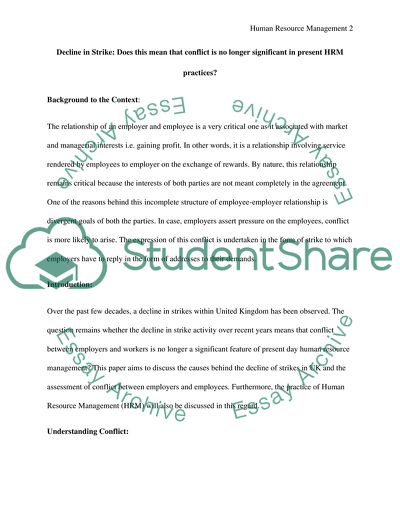Cite this document
(Discuss the view that the decline in strike activity over recent years Essay, n.d.)
Discuss the view that the decline in strike activity over recent years Essay. https://studentshare.org/human-resources/1806498-discuss-the-view-that-the-decline-in-strike-activity-over-recent-years-means-that-conflict-between-employers-and-workers-is-no-longer-a-significant-feature-of-present-day-human-resource-management
Discuss the view that the decline in strike activity over recent years Essay. https://studentshare.org/human-resources/1806498-discuss-the-view-that-the-decline-in-strike-activity-over-recent-years-means-that-conflict-between-employers-and-workers-is-no-longer-a-significant-feature-of-present-day-human-resource-management
(Discuss the View That the Decline in Strike Activity over Recent Years Essay)
Discuss the View That the Decline in Strike Activity over Recent Years Essay. https://studentshare.org/human-resources/1806498-discuss-the-view-that-the-decline-in-strike-activity-over-recent-years-means-that-conflict-between-employers-and-workers-is-no-longer-a-significant-feature-of-present-day-human-resource-management.
Discuss the View That the Decline in Strike Activity over Recent Years Essay. https://studentshare.org/human-resources/1806498-discuss-the-view-that-the-decline-in-strike-activity-over-recent-years-means-that-conflict-between-employers-and-workers-is-no-longer-a-significant-feature-of-present-day-human-resource-management.
“Discuss the View That the Decline in Strike Activity over Recent Years Essay”. https://studentshare.org/human-resources/1806498-discuss-the-view-that-the-decline-in-strike-activity-over-recent-years-means-that-conflict-between-employers-and-workers-is-no-longer-a-significant-feature-of-present-day-human-resource-management.


